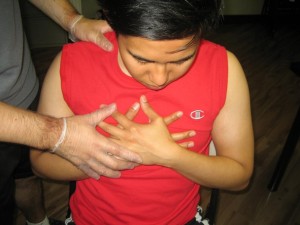A retropharyngeal abscess is considered as a serious form of infection of the neck, usually in the region at the rear part of the throat. Among children, it generally originates in the throat lymph nodes.
This type of abscess is considered rare and usually occurs among children below the age of 8 years old, but can also develop among older children as well as adults. The infection might develop rapidly and can trigger severe complications. In serious instances, it can even be fatal.
What are the signs?
Remember that this is an unusual form of infection that is hard to diagnose. The signs of retropharyngeal abscess include:
- Fever
- Difficulty swallowing
- Drooling
- Pain when swallowing
Seek prompt medical care if there is difficulty breathing or swallowing. - Cough
- Intense throat pain
- Neck muscle spasms
- Swelling or stiff neck
If any of these signs are present, a doctor should be consulted. Seek prompt medical care if there is difficulty breathing or swallowing.
Potential causes
- Among children, upper respiratory infections generally arise before the start of a retropharyngeal abscess such as a sinus or middle ear infection.
- Among older children and adults, an abscess arises after some form of trauma to the site such as an injury, dental work or medical procedure.
- Bacteria might also cause an abscess to form. In children, the usual strains responsible include staphylococcus or streptococcus. Other types of infection such as tuberculosis and HIV are also possible causes.
Management
These infections are generally managed in a healthcare facility. If the child has difficulty breathing, oxygen is provided.
In severe cases, intubation might be required. The doctor inserts a tube into the windpipe via the nose or mouth to allow breathing. This is only needed until able to continue breathing without assistance.
During this period, the doctor will manage the infection intravenously using broad-spectrum antibiotics. These drugs work against various organisms simultaneously.
Since swallowing is disrupted by a retropharyngeal abscess, intravenous fluids might also be included in the treatment. Surgery to drain the abscess is also needed if the airway is obstructed.

